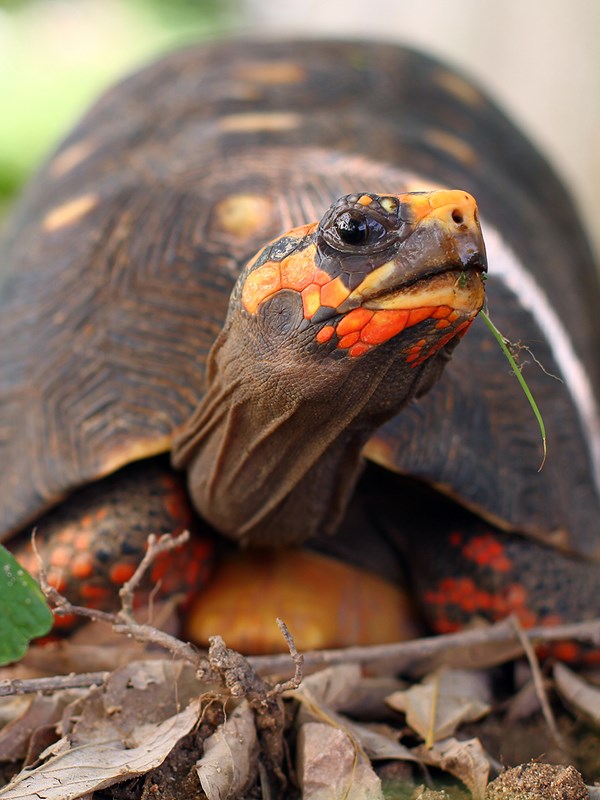
Red-footed Tortoise
Scientific Name Chelonoidis carbonaria
Native To Panama and northern South America (from Colombia to Argentina)
Habitat Wet forests and savanna
Diet Herbivore (primarily): leaves, grass, fungi, fruit and flowers; omnivore (occasionally): ants, termites, beetles, butterflies and worms
Size and Age Males up to 34 cm (13 in) long, and weigh 9 kg (20 lbs); females up to 29 cm (11 in) long; average lifespan over 50 years
Natural History
Red footed tortoises are strangely communal in some of their activities, including sleeping and eating. Not being very fast locomotors, they tend to stay within a set range of forest. When food becomes available, red-footed tortoises will alert other tortoises to the location of that food—by leaving invisible scent trails that can be followed directly to the source. They will also leave these scent trails to places such as burrows or fallen trees, so that they can rest together and take shelter from the heat of the day.
Vulnerable

Conservation Status
The red-footed tortoise is vulnerable to the pet trade and habitat destruction, such as deforestation.
Interesting Facts
- Males and females use head movements to identify each other and communicate.
- Females lay eggs in nests made of ground debris, which hatch after 150 days.
- Males will compete for females, which may result in one male flipping another upside-down.
